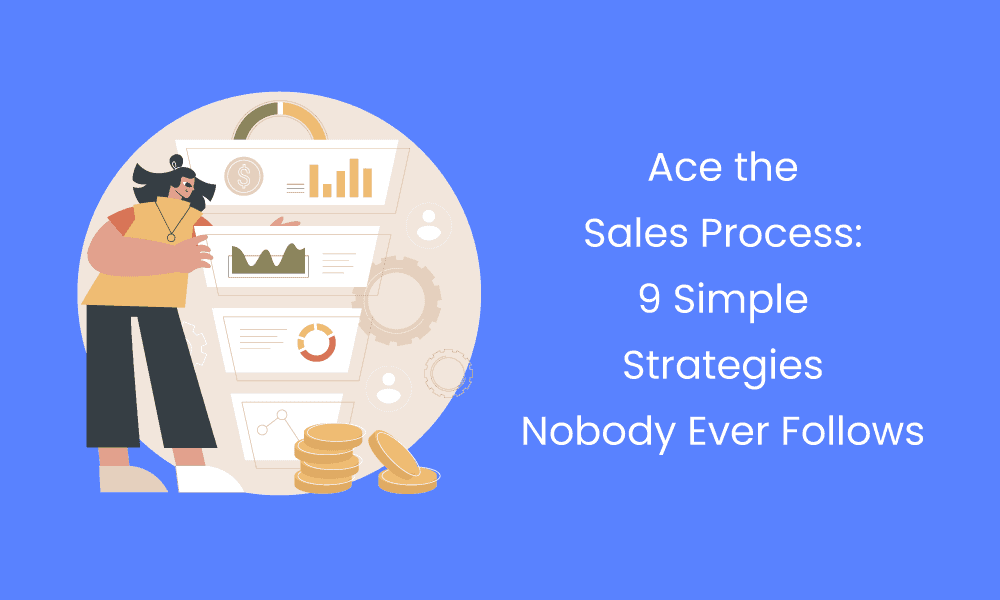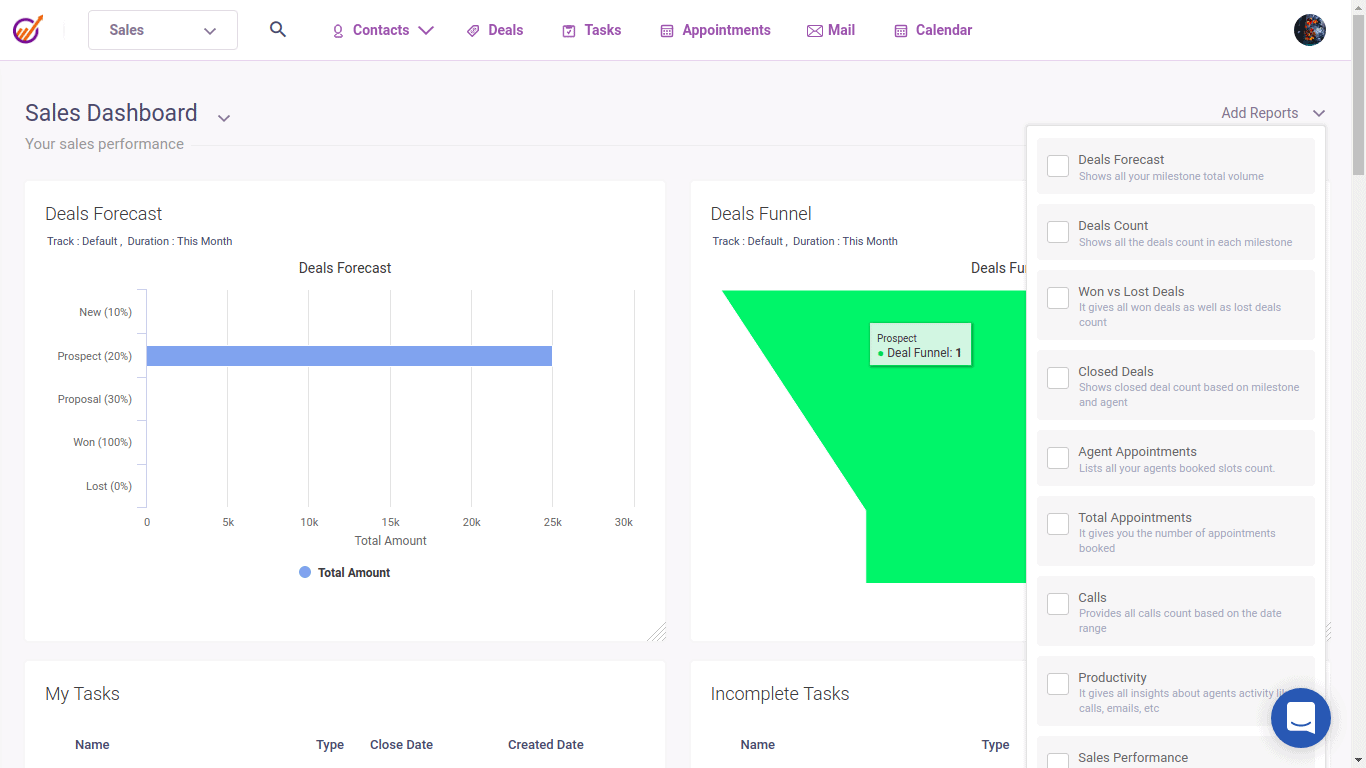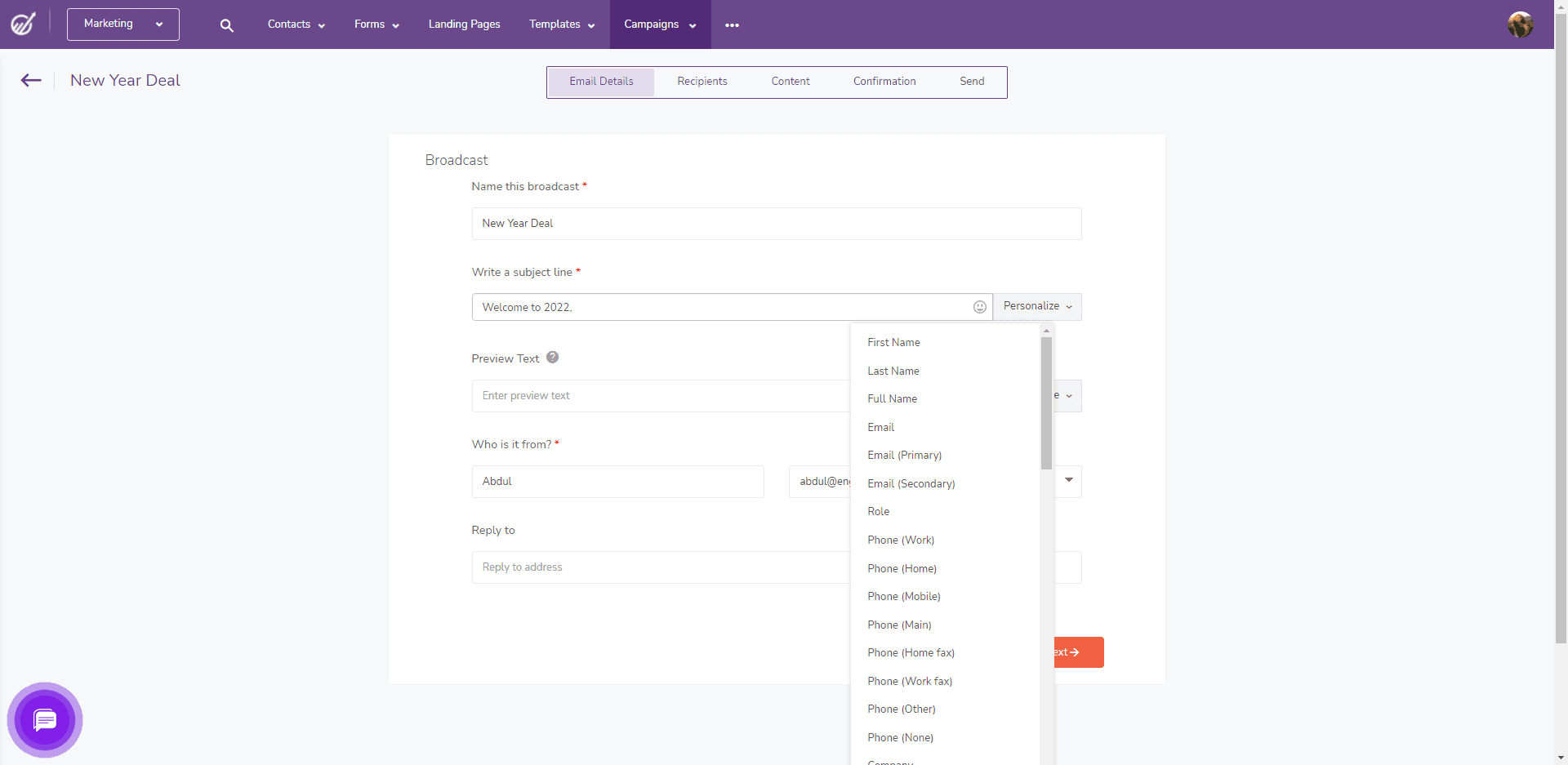The sales process is a continuous cycle, and at the end of it, you hope to have closed a deal or two.
But how do you get there? What does it take? And what are the mistakes that you need to avoid making, if possible?
In this blog post, we will go over nine proven strategies that nobody ever seems to follow in their sales process.
- Start with a consultative approach
- Communicate early and often
- Focus on building long-lasting relationships
- Be patient
- Ask questions even when you know the answer
- Understand your prospective customer
- Qualify your prospects
- Ask for referrals
- Define the values your products offer
These strategies can be applied in any industry and across all levels of management.
Let’s get started!
Table of Contents
9 Powerful Strategies to Ace the Sales Process
We know how important the sales process is for the success of your business.
Businesses are so caught up in capturing new customers and generating sales that they often overlook these subtle — albeit essential — processes.
In fact, this is why many businesses fail.
That’s why we have formulated nine proven strategies to push your sales process to new heights.
#1. Start With a Consultative Approach
Sales managers must teach their sales teams the importance of having a consultative approach in sales.
It’s a modern and effective way of selling because you’re focused on value, not price.
The consultative sales process is designed around two core values: learning what each customer needs and wants, and finding the best solution.
This solution could be a product, service, or anything you offer your customers.
Modern sales professionals have to show empathy and understanding when selling products.
Here’s a video from Brian Tracy explaining the difference between consultative selling and normal selling:
Sales reps need to go the extra mile to understand their client’s needs and pain points. That way, it will be much easier for them to plan an effective strategy for each client profile.
It doesn’t matter if you’re trying to sell professional services, software, or managed services.
As long as you remember these two principles — learning about your clients’ wants, and matching your solution against those wants at every point during the sales process — you’ll always do well as a sales professional!
Read also: What is a Sales Pipeline? 8 Tips on How to Build & Manage Yours
#2. Communicate Early and Often
One of the best things you can do for your sales process is to communicate with customers as early and as often as possible.
This will ensure that both parties are on the same page regarding the current situation, timeline, expectations, etc.
If something unexpected happens or a project falls behind schedule, be sure to inform your clients immediately, so they’re aware of what’s happening.
A sure way of losing potential customers and hence sales is to keep customers in the dark about issues that may have come up with the delivery or the sale or service.
In a simple example, I’ve personally never gone back to a brand or business that did not inform me well in advance about any delay in delivering the product or home service I ordered.
When something like this happens, as a sales manager or sales rep, you’ll see that customers and clients complain more about you not keeping them posted than about the delay or glitch itself.
Another way to avoid misunderstandings between both sides is by using email templates.
You’ll be able to send out basic information about your company and products a lot faster, without spending too much time writing fresh emails for each prospect or each issue that may come up in the sales process.
Read also: Everything You Need to Know About CRM Integrations
#3. Focus On Building Long-Lasting Relationships
You might be trying to reach the quota for your monthly targets or just trying to make yourself look good by closing a lot of deals and bringing in revenue fast.
If this is the case, you’re making a small mistake that could have serious repercussions for your career. There are better ways of working towards those goals.
The longer you spend with prospects during the sales process, the better a chance you have of converting them from a prospect to a client.

Not spending enough time with prospects during an initial sales call or communication can lead to misunderstandings, making clients feel that you’re only out for yourself and that your product is not quite what they were looking for.
If you want to build long-lasting relationships (essential in modern sales), avoid focusing on closing fast. Spend more time talking about your products, listening to your potential customers, and gathering information.
The more leads your sales team can find through personal interactions, the easier it will be for you to onboard them as loyal customers. The opposite also applies — if you don’t use these kinds of interactions when talking with new leads, the chances of onboarding them will decrease significantly.
As a sales rep, your role is to discover the real needs and problems of potential clients and match those against what you can offer. This vastly improves customer retention and is a staple for formulating a successful sales process.
#4. Be Patient
I’m sure you’re familiar with the phrase, “Go big or go home.”
But sometimes, taking a risk is not worth it.
Even if a potential client seems interested in your company and offers to sign up for your services right away, consider that maybe they were just excited about the content of your sales pitch or other factors that had little to do with whether or not they’d be a good fit for your company.
Just because someone wants to buy something from you doesn’t mean you should sell it to them. That’s why having patience can help you avoid such situations — it will give you time to think about what the next step should be so that both parties are fully aware of what’s happening.
You also need to consider the different levels of engagement that a prospect can have with your company.
In addition to being patient, you should be aware of how much time and commitment it takes on the client’s part before they’re ready to sign up for your services or products.
This means that if you see someone looking at your website and then leaving without taking any action, don’t make assumptions about what’s happening. Be patient and see whether they come back in a few days or leave their contact information so you can get in touch with them later on.
This is especially relevant for inbound marketers or companies that place ads on social media.
If you have a sales process, this part of the equation should be included. Here’s more information from SalesHacker about sales pipelines and how to manage them the right way.

#5. Ask Questions Even When You Know the Answer
A good salesperson doesn’t assume they have all the knowledge needed to close the deal successfully.
You might know a few things about what your clients are looking for or the problems they need to solve, and that’s great.
But it’s still important that you ask them questions — especially when you’re talking with new leads.
The information you gather from doing this will help your sales team understand whether your product is relevant to what they want or if any changes need to be made.
It can also help you validate assumptions that you’ve made about their business (and, therefore, their needs).
When building rapport with prospects, asking questions is crucial because it shows you care about their concerns.
This will make them trust your expertise more in negotiations and sales meetings.
The latter is especially important because if your clients don’t trust you, then nothing else matters — they won’t feel comfortable enough to buy from you or work with you.
Just remember that asking questions isn’t only about getting information; it’s also a way of learning more about your potential customers and keeping them engaged with your sales process.

#6. Understand Your Prospects
Zig Ziglar is a very well-known motivational speakers around the globe and a sales expert, and this quote sums up why identifying the prospect’s needs should be one of your top priorities.
“People do not buy for logical reasons. They buy for emotional reasons.” — Zig Ziglar
Prospects won’t care how you plan to solve their problems or what specific benefits they get from working with you — at least not right away.
To convince them that your product or service is worth paying money for, you need to demonstrate how it will help them achieve their desired outcome (e.g., increase revenue, gain loyal customers).
To learn more about identifying your prospects’ pain points and aims before pitching your product, check out this blog post from HubSpot.
Salespeople are driven by an urgency to sell more, but taking the time to understand the prospect’s needs and goals can help you position yourself as their trusted consultant instead of just another salesperson.
What are the things that often come to mind when you think about good salespeople?
Perhaps they’re personable, friendly, and not pushy. They might have a knack for asking questions and helping you see how their product can benefit your business or organization.
Whatever it is exactly that makes them great in this role, there’s one thing all great salespeople have in common: they understand what their clients want and need from them, so everything else flows more smoothly.
Read also: 8 Sales Email Automation Tools That Don’t Cost a Bomb
#7. Qualify Your Prospects
In addition to sending follow-up emails and building relationships with potential customers, salespeople should also do their best to qualify prospects before selling them anything.
It’s a great sales methodology: This way, they don’t waste time approaching and following up with all the leads.
Qualifying prospects involves checking whether a lead is likely to become a potential customer in the future by asking questions that help you understand their needs and requirements.
In this qualifying stage, sales reps need to emphasize that they’re not trying to sell anything yet and just want to learn more about the prospect’s profile or business.
If you ask prospects if their company is currently looking for a product like yours and then make recommendations based on what they tell you, it will show them that you really care about helping them solve their problems.
It also helps your salespeople qualify leads who might be interested in buying your product or service without pushing them away by coming across as pushy or overly sales-focused.
Slowly taking them through the various stages of the sales cycle through defined sales processes and scoring can help you understand if a lead is worth it (or not).
For instance, if a prospect tells you that they’re not ready to buy anything right now but will definitely revisit the idea in six months, then you should set an appointment with them for half a year down the road. You can consider such leads as qualifying but later.
Read also: What is Sales Velocity and How Do You Measure this Metric?
Another example of qualifying leads to save time and effort would be checking whether the prospect is genuinely interested in your product or service.
If, after talking to them for a while, it becomes clear that they don’t really need what you’re offering but just asked you about your business out of curiosity, then it doesn’t make sense to continue pursuing the sale.
In this case, the sales representative should thank the prospect for their time and suggest that they get in touch if they have any further questions or are ready to start using your product.
At first glance, this might seem like a waste of time because the sales rep spent minutes talking to someone who wasn’t interested. However, it would be even worse if they ended up wasting hours trying to close someone who had no intention of buying what you’re trying to sell.
All efforts in the sales process cost money one way or another, so it is always better to optimize the utilization of your resources for qualified leads rather than all the leads who answer your calls.
#8. Ask for Referrals
This one is super important.
After you’ve done your best to get the prospect comfortable with asking questions and feeling like they’re getting value out of the conversation, it’s time to ask for referrals.
Don’t skip this step thinking that it will come naturally if everything is going well.
It won’t.
In fact, over 80% of sales reps don’t ask for referrals, which means most salespeople are just wasting opportunities to increase their win rate by a huge margin.
Don’t be afraid to do what works — in this case, ask for referrals at the end of every important meeting. This is how you do it:
- Thank them again for their time and say you’ve really enjoyed learning about their business.
- Ask if they know someone else who might have a similar problem that your product or service could solve, and take their referrals seriously, although you shouldn’t be pushy.
This way, you save time prospecting for qualified leads, convey to new customers that you’re serious about sharing your brand or product with more and more people in need, and create more sales opportunities to close.
There’s usually no reason for customers to lie about having friends who benefit from what you’re selling.
You’ll be amazed at how much more receptive people will be when you’re asking for referrals if they’ve already seen the value in what you’re offering.
It’s like expanding your own network by tapping into theirs!

#9. Define the Values Your Products Offer
To define exactly what value your product or service brings to customers, take some time to document different cases for common situations your prospects go through before they look for help from other businesses like yours.
Think about their specific problems and use case studies from previous clients as inspiration.
Knowing exactly why prospects want to buy something is always helpful for sales reps because it helps them present their business clearly and concisely.
It also makes it easier for you to set the right expectations with your prospects when they ask about pricing, time commitment, etc.
If you can’t explain exactly what value customers are getting for their investment into this particular product or service, potential buyers might start wondering whether or not its benefits outweigh the costs … which is not something you want.
For example, let’s say you’re selling a customer relationship management (CRM) system.
Instead of just saying that your product is good for tracking sales deals, describe exactly why it helps people keep track of their business relationships and identify opportunities to grow more sales faster.
In the case of a CRM, it can help businesses collect data from every interaction they have with customers so they can use these insights to market to them more effectively over time or analyze their current metrics for new growth strategies.
You’ll probably notice a huge difference in how well your prospects respond if you talk about how your product actually works instead of just saying that it works!
In other words, don’t be afraid to get a little technical. Salespeople tend to forget that they’re speaking with other business people who usually understand the terminology as well.
In most cases, you can break down the value of your product or service in just three proposition areas:
- Reliable systems — everyone loves a new solution they can depend on! It’s how our lives are made easier every day.
- Fast results — nobody wants to wait around for a solution to take their business to the next level.
- Proven methods — sales reps should be excited about sharing industry best practices any chance they get because these will translate directly into more sales opportunities for everyone involved.
Read also: Types of Customer Services & What Suits Your Small Business Best
#10. Bonus Tip: Make Your Sales Process Scalable
Why should you have scalable sales processes?
This is a no-brainer because the goal of every salesperson should be to land as many sales as possible.
That’s what they get paid for, after all!
Now, this doesn’t apply to one sales rep or sales manager alone. Salespeople won’t go much far if they’re driven only by the desire to achieve their own targets.
The goal should always be to bring more revenue to the company, and for that, any sales process you develop and follow must be repeatable, scalable.
Don’t be afraid of sharing what you’ve learned in the sales process. Only by sharing knowledge and making business processes scalable do young people become industry leaders, after all.
So, what can you do to make your sales processes scalable?
Here are a few helpful pointers:
- Formulate specific milestones in advance – use dates on your calendar or an application like Google Calendar.
- Use templates — don’t reinvent the wheel when it comes to things like email and voicemails.
- Create automated email follow-up sequences based on customer behavior (if you want to dive deeper into this topic, check out our blog post about it here).
- Use CRMs — these applications are specifically designed to help you keep track of your prospects and customers in one place … and some of them are even free.
Conclusion
Acing your sales process is one of the best ways to increase efficiency and revenue at your company.
But, you can’t just tell people what’s good for them if they don’t understand why it will help them solve their problems in a way that no one else has before.
Do whatever it takes to clearly explain the value of what you’re trying to sell, and you’ll find yourself selling more, faster.
You can vastly improve your sales performance and refine your sales process steps using a sales management software.
As always, EngageBay is here to help you master your sales process with the right resources and expertise.
EngageBay can automate your sales process so your business can sell more in less time. You can get visual sales reports for custom metrics and manage your sales team with leaderboards and gamification of their tasks.
You also get deal pipelines, sales funnel management, project management, segmentation through smart lists, proposals, predictive lead scoring, and so much more.
Sign up now, and streamline your sales process!








